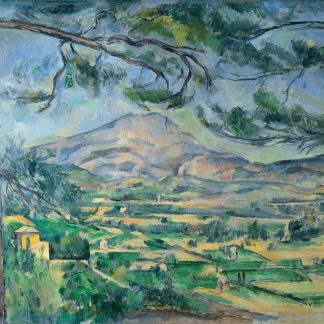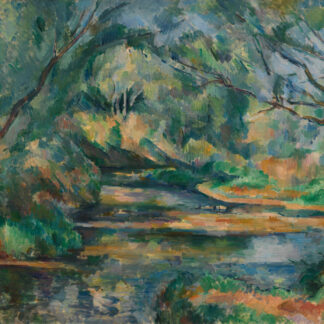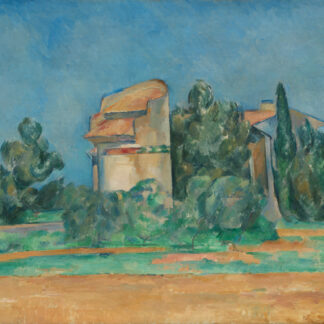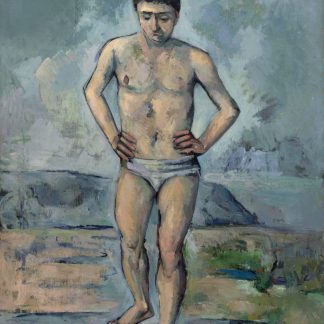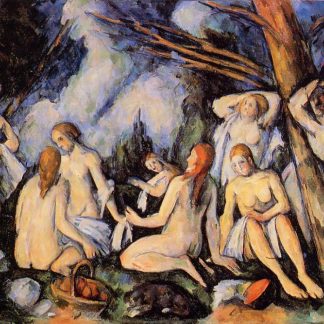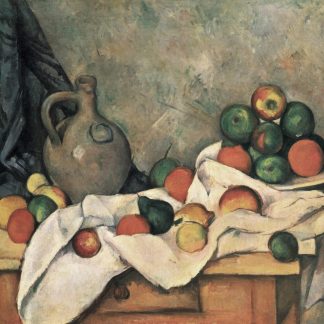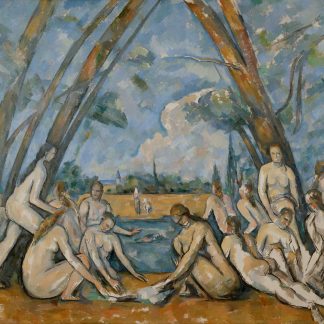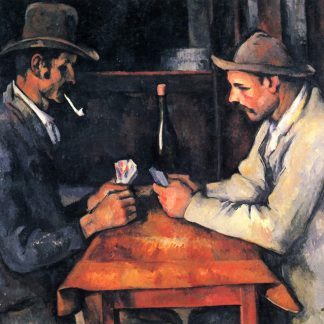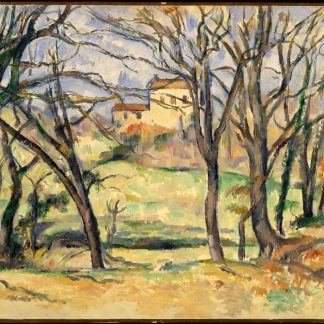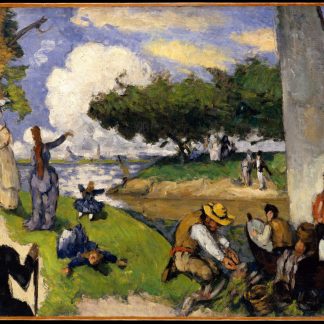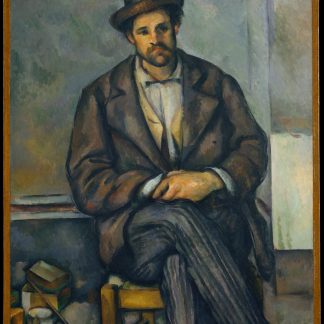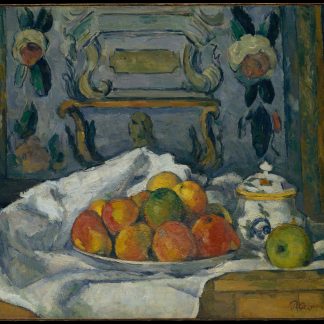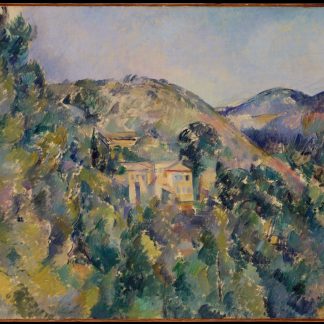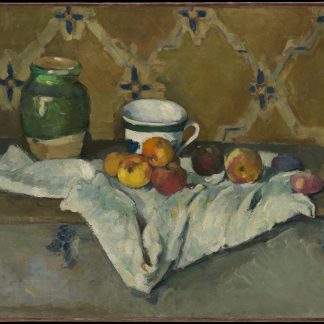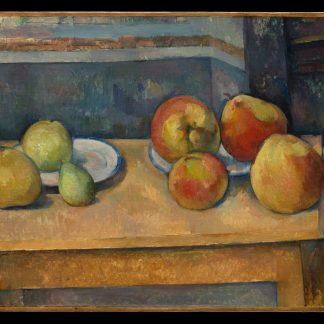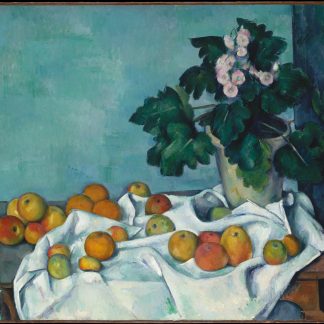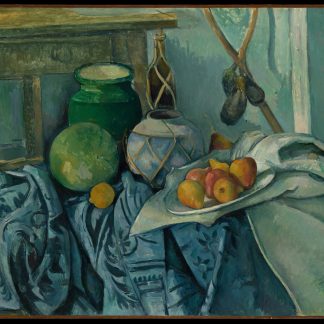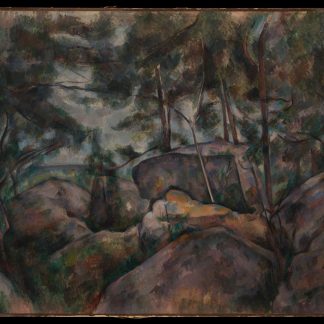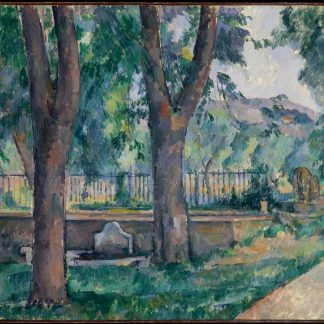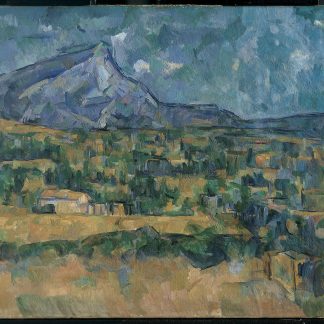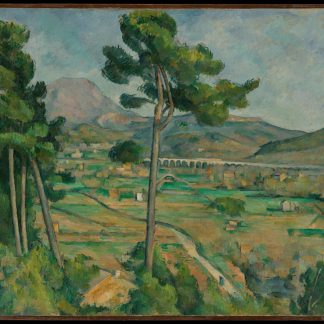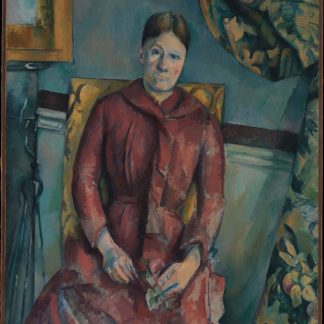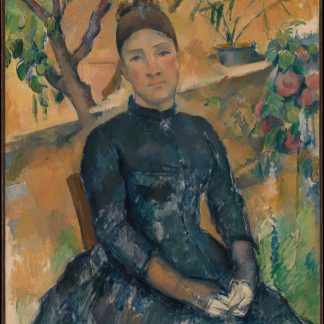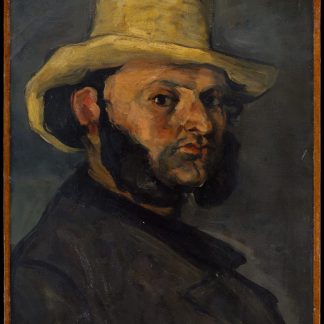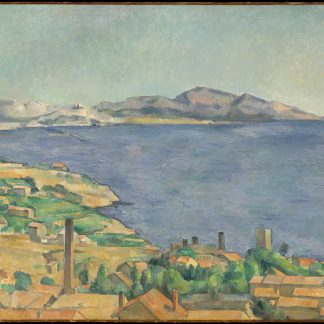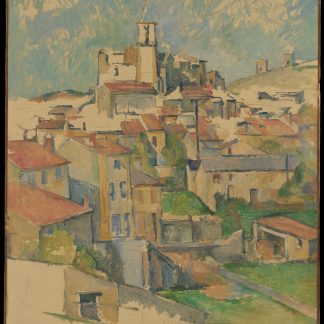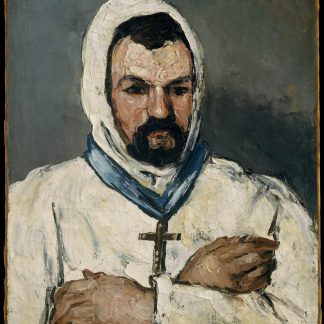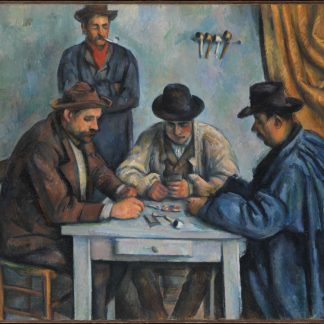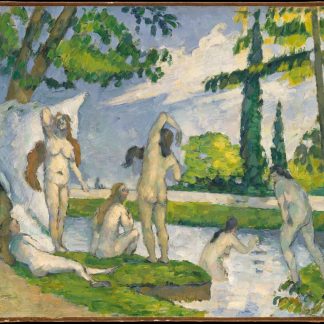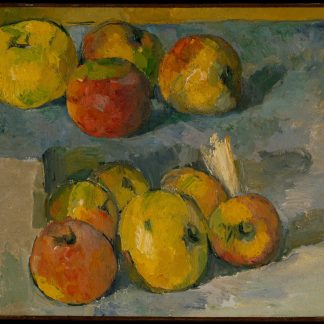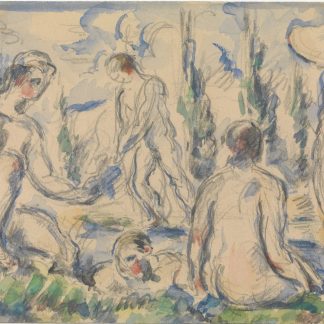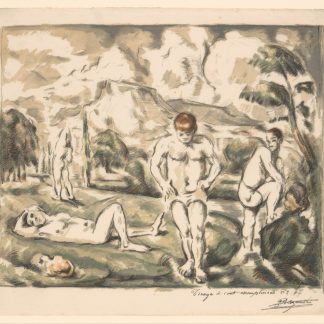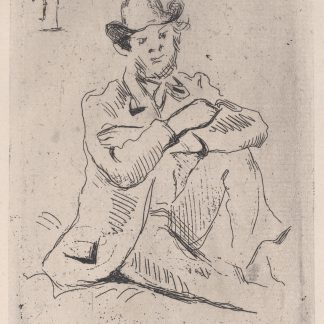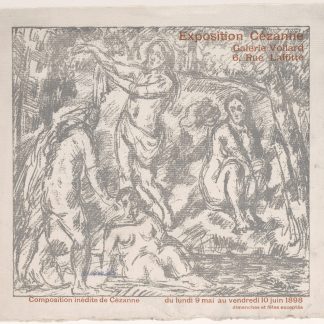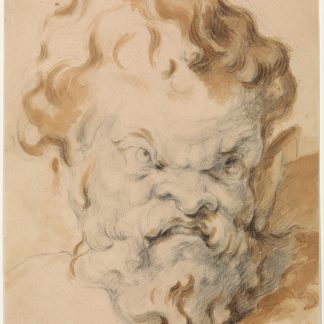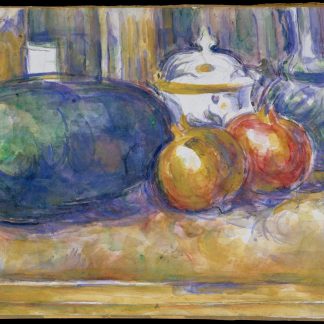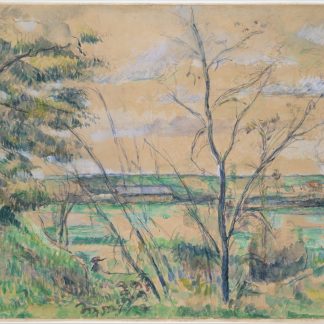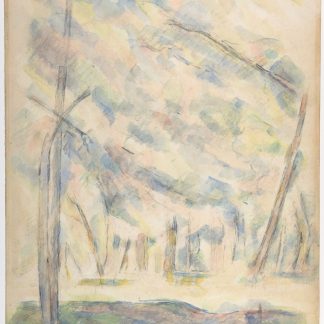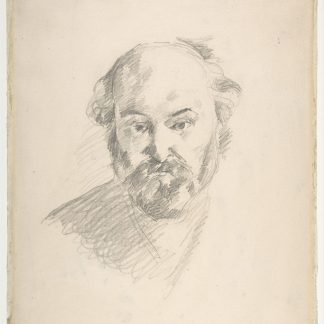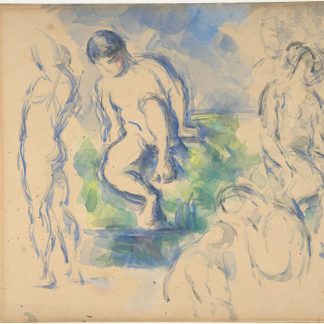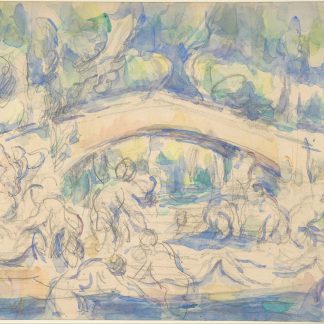Paul Cézanne was a French post-impressionist painter born in Aix-en-Provence in 1839. Cézanne’s artistic career spanned several decades, during which he produced an extensive body of work that was highly influential in the development of modern art. He is often considered the father of modern art and the precursor to the cubist movement. Cézanne is known for his distinct style, characterized by the use of vibrant colors, fragmented brushstrokes, and geometric forms.
Cézanne’s early works were influenced by impressionism, but he soon began to develop his own unique style, which he called “constructive stroke.” He believed that the visual world could be broken down into basic geometric shapes, and he used this approach to create a sense of structure and form in his paintings. His work often focused on still lifes, landscapes, and portraits, and he was known for his use of color and light to convey a sense of depth and atmosphere. Despite initial rejection by the artistic establishment, Cézanne’s work gradually gained recognition and appreciation, and he went on to become one of the most important and influential painters of his time. His legacy continues to influence modern art, and his work is highly prized by collectors and art enthusiasts around the world.
Showing all 50 results
-

Mont Sainte-Victoire with Large Pine
Cézanne, Paul From $28.69 Select options This product has multiple variants. The options may be chosen on the product page -

Mount Sainte Victoire C 1904. Oil On Fabric
Cézanne, Paul From $28.69 Select options This product has multiple variants. The options may be chosen on the product page -

The Brook C 1895–1900. Oil On Fabric
Cézanne, Paul From $28.69 Select options This product has multiple variants. The options may be chosen on the product page -

The Pigeon Tower At Bellevue 1890. Oil On Fabric
Cézanne, Paul From $28.69 Select options This product has multiple variants. The options may be chosen on the product page -

The Bather
Cézanne, Paul From $28.69 Select options This product has multiple variants. The options may be chosen on the product page -

Bathers
Cézanne, Paul From $28.69 Select options This product has multiple variants. The options may be chosen on the product page -

The Large Bathers
Cézanne, Paul From $28.69 Select options This product has multiple variants. The options may be chosen on the product page -

Rideau, Cruchon et Compotier
Cézanne, Paul From $28.69 Select options This product has multiple variants. The options may be chosen on the product page -

The Basket of Apples
Cézanne, Paul From $28.69 Select options This product has multiple variants. The options may be chosen on the product page -

Montagne Saint-Victoire
Cézanne, Paul From $28.69 Select options This product has multiple variants. The options may be chosen on the product page -

Mont Sainte-Victoire seen from Bellevue
Cézanne, Paul From $28.69 Select options This product has multiple variants. The options may be chosen on the product page -

The Bathers
Cézanne, Paul From $28.69 Select options This product has multiple variants. The options may be chosen on the product page -

The Card Players
Cézanne, Paul From $28.69 Select options This product has multiple variants. The options may be chosen on the product page -

Trees and Houses Near the Jas de Bouffan
Cézanne, Paul From $28.69 Select options This product has multiple variants. The options may be chosen on the product page -

The Fishermen (Fantastic Scene)
Cézanne, Paul From $28.69 Select options This product has multiple variants. The options may be chosen on the product page -

Seated Peasant
Cézanne, Paul From $28.69 Select options This product has multiple variants. The options may be chosen on the product page -

Dish of Apples
Cézanne, Paul From $28.69 Select options This product has multiple variants. The options may be chosen on the product page -

View of the Domaine Saint-Joseph
Cézanne, Paul From $28.69 Select options This product has multiple variants. The options may be chosen on the product page -

Still Life with Jar, Cup, and Apples
Cézanne, Paul From $28.69 Select options This product has multiple variants. The options may be chosen on the product page -

Still Life with Apples and Pears
Cézanne, Paul From $28.69 Select options This product has multiple variants. The options may be chosen on the product page -

Still Life with Apples and a Pot of Primroses
Cézanne, Paul From $28.69 Select options This product has multiple variants. The options may be chosen on the product page -

Still Life with a Ginger Jar and Eggplants
Cézanne, Paul From $28.69 Select options This product has multiple variants. The options may be chosen on the product page -

Rocks at Fontainebleau
Cézanne, Paul From $28.69 Select options This product has multiple variants. The options may be chosen on the product page -

The Pool at Jas de Bouffan
Cézanne, Paul From $28.69 Select options This product has multiple variants. The options may be chosen on the product page -

Mont Sainte-Victoire
Cézanne, Paul From $28.69 Select options This product has multiple variants. The options may be chosen on the product page -

Mont Sainte-Victoire and the Viaduct of the Arc River Valley
Cézanne, Paul From $28.69 Select options This product has multiple variants. The options may be chosen on the product page -

Madame Cézanne (Hortense Fiquet, 1850–1922) in a Red Dress
Cézanne, Paul From $28.69 Select options This product has multiple variants. The options may be chosen on the product page -

Madame Cézanne (Hortense Fiquet, 1850–1922) in the Conservatory
Cézanne, Paul From $28.69 Select options This product has multiple variants. The options may be chosen on the product page -

The House with the Cracked Walls
Cézanne, Paul From $28.69 Select options This product has multiple variants. The options may be chosen on the product page -

Gustave Boyer (b. 1840) in a Straw Hat
Cézanne, Paul From $28.69 Select options This product has multiple variants. The options may be chosen on the product page -

The Gulf of Marseilles Seen from L’Estaque
Cézanne, Paul From $28.69 Select options This product has multiple variants. The options may be chosen on the product page -

Gardanne
Cézanne, Paul From $28.69 Select options This product has multiple variants. The options may be chosen on the product page -

Antoine Dominique Sauveur Aubert (born 1817), the Artist’s Uncle
Cézanne, Paul From $28.69 Select options This product has multiple variants. The options may be chosen on the product page -

Antoine Dominique Sauveur Aubert (born 1817), the Artist’s Uncle, as a Monk
Cézanne, Paul From $28.69 Select options This product has multiple variants. The options may be chosen on the product page -

The Card Players
Cézanne, Paul From $28.69 Select options This product has multiple variants. The options may be chosen on the product page -

Bathers
Cézanne, Paul From $28.69 Select options This product has multiple variants. The options may be chosen on the product page -

Apples
Cézanne, Paul From $28.69 Select options This product has multiple variants. The options may be chosen on the product page -

Bathers (recto); Landscape (verso)
Cézanne, Paul From $28.69 Select options This product has multiple variants. The options may be chosen on the product page -

The Large Bathers (Les Baigneurs)
Cézanne, Paul From $28.69 Select options This product has multiple variants. The options may be chosen on the product page -

Portrait of Guillaumin with a Hanging Man
Cézanne, Paul From $28.69 Select options This product has multiple variants. The options may be chosen on the product page -

Exhibition Catalogue Cover for a Cézanne show at the Galerie Vollard (May 9-June 10, 1898)
Cézanne, Paul From $28.69 Select options This product has multiple variants. The options may be chosen on the product page -

Head of Silenus
Cézanne, Paul From $28.69 Select options This product has multiple variants. The options may be chosen on the product page -

Still-Life with a Watermelon and Pomegranates
Cézanne, Paul From $28.69 Select options This product has multiple variants. The options may be chosen on the product page -

Entrance to a Garden
Cézanne, Paul From $28.69 Select options This product has multiple variants. The options may be chosen on the product page -

In the Oise Valley
Cézanne, Paul From $28.69 Select options This product has multiple variants. The options may be chosen on the product page -

Landscape (recto); Sketch of rocks(?) (verso)
Cézanne, Paul From $28.69 Select options This product has multiple variants. The options may be chosen on the product page -

Portrait of the Artist (recto); Fragment of a Landscape Study (verso)
Cézanne, Paul From $28.69 Select options This product has multiple variants. The options may be chosen on the product page -

Bathers (recto); Still Life (verso)
Cézanne, Paul From $28.69 Select options This product has multiple variants. The options may be chosen on the product page -

Studies of a tree (recto and verso)
Cézanne, Paul From $28.69 Select options This product has multiple variants. The options may be chosen on the product page -

Bathers Under a Bridge (recto); Study after Houdon’s Ecorché (verso)
Cézanne, Paul From $28.69 Select options This product has multiple variants. The options may be chosen on the product page
Showing all 50 results

